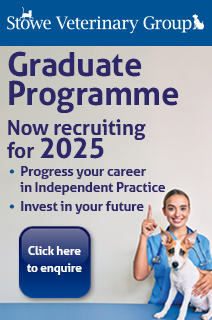
Meetings should be an important and regular part of working in a veterinary practice, however too often they are derided as ‘a waste of time’ or ‘boring’. The truth is, this negative attitude towards meetings may signify that a new approach is needed.
Purpose
A meeting might be called for a variety of reasons. It can be a clear and direct way to disseminate key information, such as details about a new medication or a new practice process, to a wide range of people. Alternatively, a meeting may be called to encourage discussion – perhaps to approach a problem or encourage creative thinking. There should always be a clear objective and reason to call the meeting.
Considering the purpose of a meeting is the most necessary step to make sure that it is a valuable use of time. By regularly calling meetings for small, insignificant matters, you risk being faced with a frustrated or demoralised team. If you aren’t confident on the topic of the meeting, talk to key team members to find out what matters to them. Some businesses will even leave a blank page in a common room for people to note down potential topics for discussion. However you decide on your purpose, you will then need to turn this into a sensible structure for a meeting.
Schedule
Most veterinary practices are run to a tight schedule, and the way your organise meetings should suit everyone. As a general rule, regular and well-planned meetings should take no longer than an hour. This should provide the optimal amount of time to thoroughly discuss relevant matters, while fitting comfortably within most people’s schedules. It can also be a sensible idea to set a concrete start and finish time, which manages attendance by allowing people to schedule to suit.
Attendees
Meetings are a great opportunity to get all relevant parties in the same place, but the participant list should be carefully considered before invites are sent out. It can be annoying to attend a meeting you don’t need to be at, but it can also be frustrating to find that you weren’t invited when the subject matter concerns you. A concise participant list will also help you to manage the time and resources needed for the meeting more effectively.
Veterinary practices thrive from team work, and the way you chair your meetings should reflect this. Everyone present should be given the time and resources to participate fully in the meeting. Encourage supportive feedback from your participants, but warn against unhelpful complaints. For future meetings, it can also be encouraging to rotate the chairmanship, so that the most relevant person gets the opportunity to lead proceedings.
Moving forward
Finally, as proceedings draw to a close, you should consider how you are going to end your meeting. A good approach is to look to the future, by setting goals or actions that can be revisited in your next meeting. Be sure to let those relevant know what their roles will be, and check that they have what they need. Alternatively you may wish to invite a team member, or an external speaker, to share some CPD education from which those present can benefit from.


